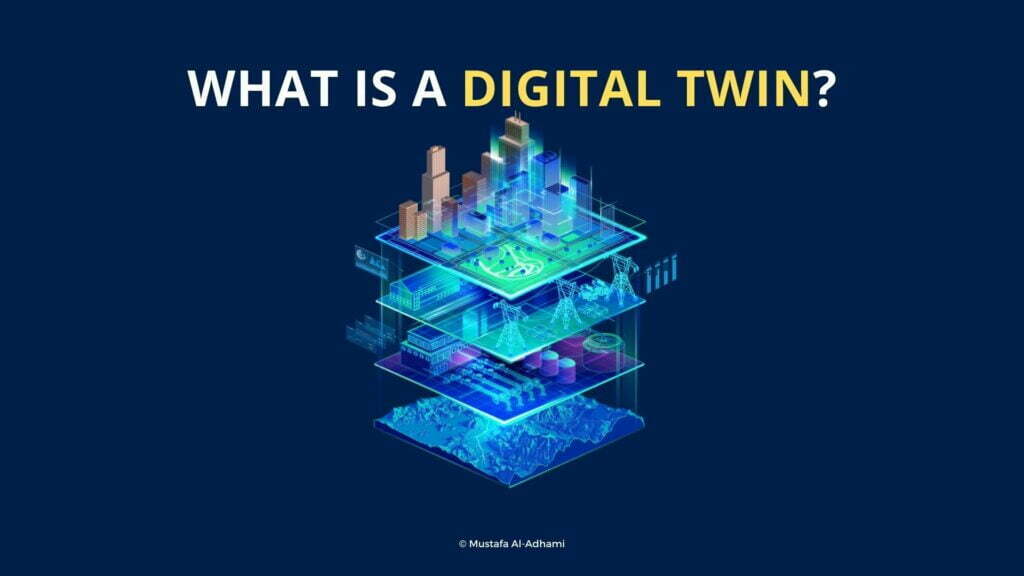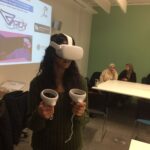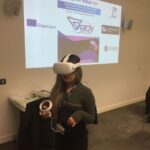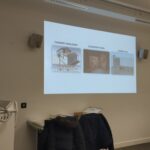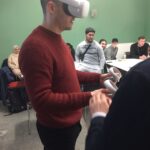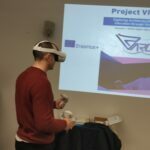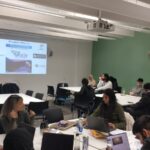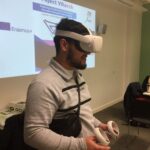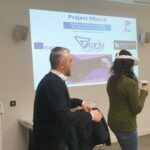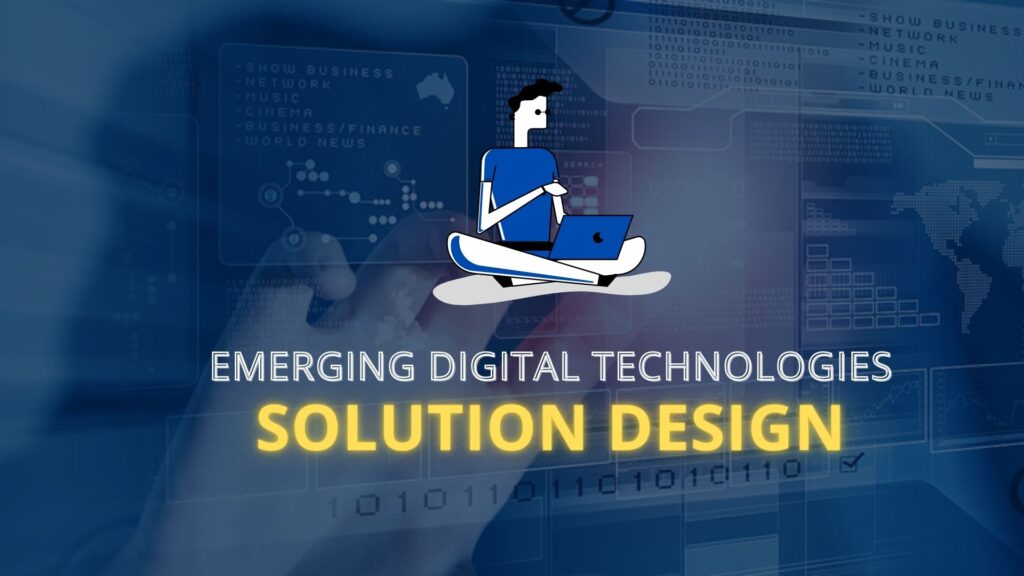This is part of Mustafa Al-Adhami’s Lecture Series at Birmingham City University, where he leads the Emerging Digital Technologies module for Level 5 Architectural technology. This subject provides an in-depth examination of the integration of technology in the lifecycle of the building. The series aims to enlighten students and professionals about the latest advancements and their potential to shape the future of our built environment.
Session 0.1: Introduction to Emerging Digital Technologies in the Built Environment
The session was focused on digital twin technology and its applications in industry, particularly in the built environment. During the session, students learned about the definition and various uses of a digital twin, as well as its differences from BIM technology. By attending the session, students gained a deeper understanding of the capabilities and limitations of these technologies, which can help them make more informed decisions when working on projects in the AECOM industry.

What is a Digital Twin?

There are many definitions of a digital twin from different fields. Below is a list of some of them.
| (IBM) | A digital twin is a virtual model designed to accurately reflect a physical object. |
| AWS | A digital twin is a virtual model of a physical object. It spans the object’s lifecycle and uses real-time data sent from sensors on the object to simulate the behaviour and monitor operations. Digital twins can replicate many real-world items, from single pieces of equipment in a factory to full installations, such as wind turbines and even entire cities. Digital twin technology allows you to oversee the performance of an asset, identify potential faults, and make better-informed decisions about maintenance and lifecycle. |
| Gartner | A digital twin is a digital representation of a real-world entity or system. The implementation of a digital twin is an encapsulated software object or model that mirrors a unique physical object, process, organization, person or other abstraction. Data from multiple digital twins can be aggregated for a composite view across a number of real-world entities, such as a power plant or a city, and their related processes. |
| Arup, 2019 | A digital twin, as a means to link digital models and simulations with real-world data, creates new possibilities for improved creativity, competitive advantage and human-centred design. |
| Bolton et al., 2018 | In the context of the Centre for Digital Built Britain, a digital twin is “a realistic digital representation of assets, processes or systems in the built or natural environment”. |
| Lee et al., 2013 | A digital twin is a coupled model of the real machine that operates in the cloud platform and simulates the health condition with integrated knowledge from both data-driven analytical algorithms as well as other available physical knowledge. |
| Glaessgen et al., 2012 | A digital twin is an integrated multiphysics, multiscale, probabilistic simulation of an as-built vehicle or system that uses the best available physical models, sensor updates, fleet history, etc., to mirror the life of its corresponding flying twin. |

Read more on ( cyberrealityX )
Why do we need digital twins?

Digital twins offer users many benefits. We’ll unpack some of the following.
- Improved product design and performance
- Enhanced operational efficiency
- Better decision-making capabilities
- Reduced downtime and maintenance costs
Digital Twins to improve performance

Digital Twins can offer predictive capabilities

Digital Twins offers Remote monitoring capabilities

Digital twins can reduce downtime and maintenance costs

What industries use digital twin technology?
A number of industries are increasingly using digital twins to build virtual representations of their real-world systems, Such as:
Construction
You can accelerate production time on products and facilities before they exist by building digital replicas. By running scenarios, you can see how your product or facility reacts to failures and make the necessary changes before actual production.
Manufacturing
Digital twins are used throughout the manufacturing lifecycle, from designing and planning to maintaining existing facilities. A digital twin prototype allows you to monitor your equipment at all times and analyze performance data that shows how a particular part or the entirety of your plant is functioning.
Digital Twin in Energy
Digital twins are widely used in the energy sector to support strategic project planning and optimize the performance and lifecycles of existing assets, such as offshore installations, refining facilities, wind farms, and solar projects.
Automotive
You can accelerate production time on products and facilities before they exist by building digital replicas. By running scenarios, you can see how your product or facility reacts to failures and make the necessary changes before actual production.
Healthcare
You can accelerate production time on products and facilities before they exist by building digital replicas. By running scenarios, you can see how your product or facility reacts to failures and make the necessary changes before actual production.
Types of Digital Twins

There are generally Four types of digital twins:
- Component twins
- Asset twins
- System twins
- Process twins
Component twins
A component or part digital twin is a virtual representation of a physical product, such as a machine, vehicle, or consumer product. It captures data from sensors embedded in the product, allowing manufacturers to monitor performance, identify issues, and make improvements.

Asset twins
Asset twins let you study the interaction of those components, creating a wealth of performance data that can be processed and turned into actionable insights.

System twins
A system digital twin is a virtual representation of a complex system, such as a city or a network of connected devices. It captures data from various sources, such as sensors and cameras, to provide insights into the behaviour of the system and help optimise performance and efficiency.

Process twins
A process digital twin is a virtual representation of a physical manufacturing process, such as a production line. It simulates the behaviour of the process in real time, allowing manufacturers to optimise production, reduce downtime, and improve quality.

Each type of digital twin has its own unique characteristics and uses. For example, Product digital twins are used for design optimisation, predictive maintenance, and performance monitoring. Process digital twins are used to optimise production and improve quality. System digital twins are used for smart city planning, energy management, and optimising logistics and transportation.
How does a digital twin work?

A digital twin works by creating a virtual replica of a physical asset or system and then connecting that replica to real-time data sources such as sensors and other IoT devices. This allows the digital twin to monitor the real-world asset and provide insights into its behaviour and performance.
The overall process of creating a digital twin typically involves the following steps:
Creation of a virtual model: A virtual model of the physical asset or system is created using computer-aided design (CAD), BIM for building or any other software. This model includes all the relevant details, such as dimensions, materials, and components.
Integration with real-time data: The digital twin is then integrated with real-time data sources such as sensors and IoT devices. This allows the digital twin to receive data from the physical asset in real time.
Analysis and visualisation: The data received from the physical asset is analysed by the digital twin to provide insights into its behaviour and performance. The insights are then visualised using various tools such as dashboards, graphs, and charts.
Predictive capabilities: The digital twin can use the insights gained from its analysis to predict future behaviour and performance of the physical asset or system. This can help identify potential issues before they occur and allow for proactive maintenance. At this stage, you need to consider Artificial intelligence (AI) and Machine Learning models.
Optimisation: The digital twin can also be used to optimise the performance of the physical asset or system. By simulating different scenarios, the digital twin can identify the most efficient and effective ways to operate the physical asset or system.
Overall, a digital twin is a powerful tool that can provide a wealth of insights and opportunities for the optimisation and improvement of physical assets and systems.
What is the difference between BIM and Digital Twin?
Building Information Modeling (BIM) and digital twins are both digital representations of physical assets, but they differ in several ways:
- Scope: BIM is primarily used in the construction and building industry to design, build and manage physical structures. On the other hand, digital twins are used across a range of industries, including manufacturing, healthcare, and transportation, to create digital models of products, systems, and processes.
- Data: BIM focuses on capturing the geometry and attributes of a building, such as dimensions, materials, and equipment. Digital twins, on the other hand, capture real-time data from sensors and other sources, providing a dynamic and up-to-date representation of the physical asset.
- Interactivity: BIM is a static model that is typically used during the design and construction phases of a building’s lifecycle. Digital twins are interactive models that can be used throughout a building’s entire lifecycle, providing ongoing monitoring, analysis, and optimisation.
- Purpose: BIM is primarily used for design and construction purposes, while digital twins are used for a range of purposes, including predictive maintenance, performance optimisation, and monitoring.




While both BIM and digital twins are digital representations of physical assets, BIM is focused on the design and construction phase of buildings, while digital twins are interactive models that provide ongoing monitoring, analysis, and optimization across a range of industries and asset types.
Guest Speaker
During the session, we were privileged to have Dr Yasin Ortakci and Prof Huseyin Seker, as our guest speakers, who spoke about the vrarch Project.
The project aims to create immersive VR applications that accurately visualise historical buildings, enabling restoration education in 3D. Additionally, it aims to train individuals capable of developing these applications, creating a new area of employment in the field of informatics. The project’s objectives are threefold:
Firstly, to enhance the quality of higher education by providing innovative course materials and training methods that can be utilised in restoration education.
Secondly, to promote the development of a new employment sector in informatics by providing human resources with the necessary training and skills to create these applications.
Finally, to safeguard our cultural heritage by establishing a VR application archive that can be utilised for centuries to come in the restoration of historical buildings.
Some of the photos can be found in the link (Source)

